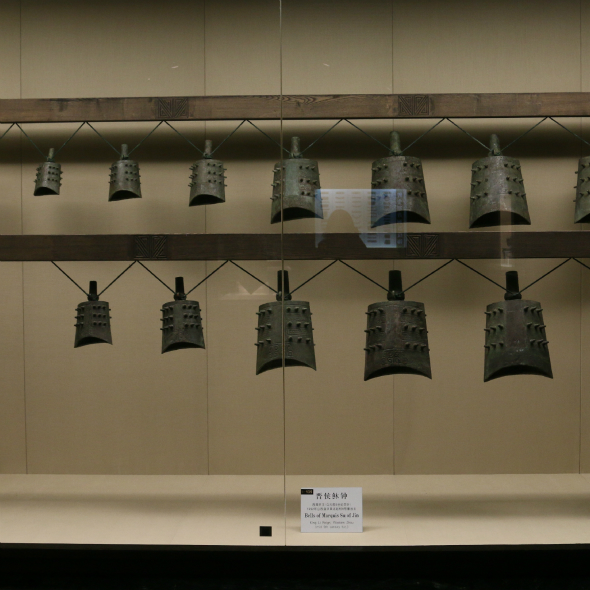Shanghai Museum on People's Square

Shanghai Museum, renowned as one of China's finest museums, houses a collection of nearly 1.02 million items, of which 145,000 have been designated as national treasures.
Here are some of the treasures collected in the museum.

Da Ke Ding
The Da Ke Ding bronze tripod is a significant artifact in Chinese bronze art. It belonged to an elite official named Ke during the late Western Zhou Dynasty (1046-771 BC). Standing over 133 centimeters (52 inches) tall and weighing around 219 kilograms, it is known for its large size and exquisite craftsmanship.
The inscription of 290 characters found on its surface provides invaluable insights into the politics and economy of the Zhou Dynasty and is also considered a magnificent work of calligraphy.

Bianzhong of Marquis Su of Jin State
This set of bianzhong (musical chimes) consists of 16 pieces that can form two rows with harmonious scales and rhythms. The inscriptions on the bells, totaling 355 characters, record the time and merits of Marquis Su during his expedition with King Li of Zhou to the east. The inscriptions record the time and merits of Marquis Su on his expedition with King Li of Zhou to the east which was unseen in the history books and an important supplement to the history materials of Western Zhou. In addition, the almanac of the Western Zhou can be deduced according to the inscriptions.

Gaoyi Tu
Created during the late Tang Dynasty (618-907), Gaoyi Tu is a painting that depicts the Seven Sages of the Bamboo Grove, a group of famous Chinese scholars and poets from the late Wei Dynasty (AD 220-266).
The Seven Sages gathered in the bamboo forest to escape the political world and pursue a rustic life. Gaoyi Tu is believed to be the earliest surviving scroll with this theme and offers a glimpse into the unrestrained manners of the Seven Sages.

Ku Sun Tie
Ku Sun Tie is a letter written by Huai Su, a master of cursive calligraphy during the Tang Dynasty. Although it consists of only 14 characters, its artistic value has impressed viewers and collectors for thousands of years.

Pan (water vessel) of Zi Zhong Jiang
The Pan is a water container used for ritual washing during sacrificial ceremonies and banquets in the Shang and Zhou periods. The interior of the Pan is decorated with relief and three-dimensional aquatic animals, such as fish, turtles, frogs, and water birds.
The most extraordinary feature is that all the round-carved animals can be swiveled 360 degrees, creating a dynamic scene. The Pan was made by a high-level official for his wife, Zhong Jiang, to use for washing up.
If you go
Open: 9 am - 5 pm (Admission stops at 4 pm) Closed every Monday, except on public holidays.
Address: No 201 Renmin Avenue, Huangpu district
You can get there by taking Metro Lines 1, 2, or 8 and getting off at People's Square Station.
Shanghai Museum no longer requires reservations for individual visitors at its People's Square location starting Sept 1, 2025.
Reservations will still be required during peak periods such as national holidays, summer and winter school breaks, and for popular special exhibitions. You can reserve your spot through the "上海博物馆参观预约" (Shanghai Museum Reservation) WeChat mini program.
(Updated on Sept 1, 2025)
Sources: shanghaimuseum.net, "SH-museum" WeChat account